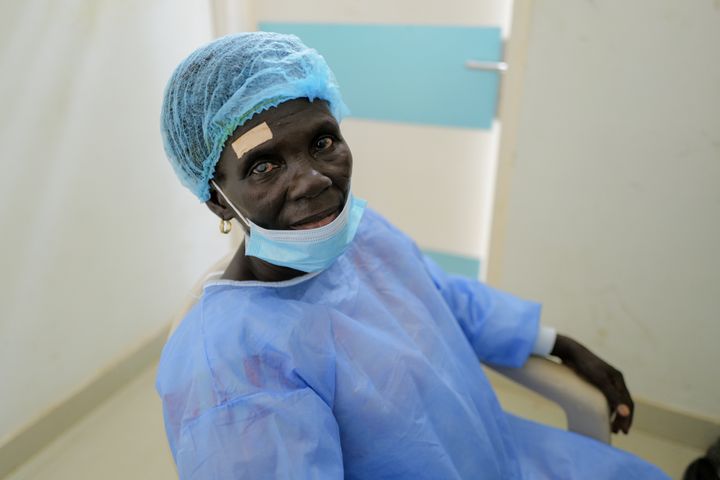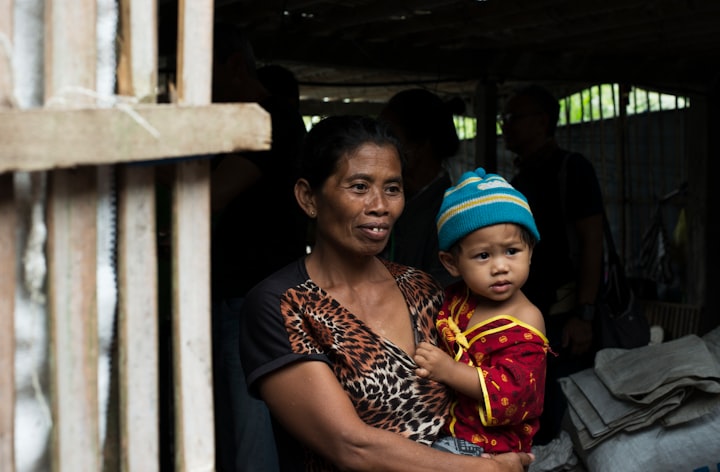‘God of Sight’ Dr Sanduk Ruit Is Restoring Hope One Pair Of Eyes At Time

Written by Ali Gripper
The Barefoot Surgeon
The Barefoot Surgeon is a biography written by Ali Gripper about Tej Kohli & Ruit Foundation co-founder Dr Sanduk Ruit. It tells the story of a boy who grew up in a tiny, remote village in the Himalayas — a village with no school — who became one of the most respected ophthalmologists in the world and a giant of Asia.
Born into the lowest tiers of a rigid caste system, Sanduk Ruit had absolutely nothing to his name: no money, and no connections. In a society where success is so often dependent on patrons, he relied on sheer willpower to overcome all the odds and become one of the developing world’s finest doctors.
Trained and befriended by Australian eye doctor Fred Hollows in the late eighties, Sanduk became his soul mate and his champion, perfecting the older man’s techniques to restore sight, so far, to more than 130,000 people. He built a world-class hospital in the Nepalese capital in Kathmandu, and runs the lens factory that Fred built next to it, so that he could continue his miraculous work.
With the backing of the Fred Hollows Foundation, Sanduk has turned his back on a comfortable life and taken on a system which was willing to ignore the poor and the forgotten, pioneering a way to help tens of thousands of people see again through his, stitch-free intraocular eye surgery which he performs at his hospitals and at remote eye camps throughout Asia.
Even more importantly, he is training thousands of surgeons in his methods. Every year, surgeons come from the four corners of the globe to Kathmandu for tutelage from the man known as “The God of Sight”. They come from Australia, Britain, China, Indonesia, Thailand, The Philippines, Ethiopia, Myanmar, — and now, even North Korea.
The Fight Against Avoidable Blindness
Dr Ruit’s inexpensive, revolutionary surgery is transforming the lives of tens of thousands of people around the globe — people who would otherwise have been completely overlooked, and who are left in back rooms to slowly die.
Sanduk’s astonishing speed as a surgeon meant he could have commanded a high salary in Australia, the US, Europe or the UK. Instead he has stayed in Nepal and is dedicating his life to correcting one of the great injustices of our time — wiping out avoidable blindness.
The surgeon was taught intraocular surgery by Fred Hollows at Sydney’s Prince of Wales Hospital. He then perfected the technique, working out a way to do it quickly and safely without stitches.
Armed with this skill, now known as ‘The Nepali technique’, he then made another radical leap and began taking mobile surgeries to cure the blind in some of the most remote parts of Nepal, something that was completely unheard of in the country at the time.
With a small team of loyal colleagues, willing to take a risk with him, he would load up a battered old bus with microscopes, and other surgical equipment, riding on the roof if there was no room, and drive for six to eight hours along some of the most treacherous mountain roads in the world to restore sight.
He proved to the medical establishment that his surgical results were as good on makeshift tables in far-flung schoolhouses and monasteries as they were in modern operating theatres.
Sanduk then built his world-class hospital, The Tilganga Institute of Ophthalmology, which stands like a miracle amongst the grinding poverty in Kathmandu. Here he continues to perform more than 50 surgeries a day. In stark contrast, most western doctors would complete 15 at the most.
“Why shouldn’t the poor have as much right to good quality of sight as anyone else in the world?” Sanduk says. “Because of my background, my family, and where I grew up, I understand them. I have experienced their life. It’s not just an intellectual idea. I know they are the most deserving people on the earth, and right from the start, I was determined to do everything I could for them.”
Dr Sanduk Ruit’s Early Life
Life for the blind is as absolutely paralysing in a country as poor as Nepal. The roads are dangerous to navigate and many patients are too poor to afford the bus fare to Kathmandu, or for a family member to stop work for a week to take them there. The blind have no Braille, no guide dogs, no special schools. Often they are too weak to get to a hospital. The youngest daughter of the family often has to leave school to look after a blind relative.
Although Sanduk is busy, he talks to each of his patients.
“Sometimes when they lie down on the operating table, I can feel the pain of their lives. When I see them huddled at the gates of the hospital, or outside the camps, led by their families, I feel glad that I can do something that’s really going to help them, “ he says.
An estimated 600,000 people in Nepal are blind or vision impaired and 90 per cent of them living in rural and remote areas, making them some of the poorest people in the world. Sanduk knew the only way to keep his surgery cheap was to smash the price of intraocular lenses. So, with the backing of his great friend and colleague, Fred Hollows, shortly before Fred died, a lens factory was built next to his Kathmandu hospital. Supported by the Foundation set up to carry on his work, The Fred Hollows Intraocular Lens Laboratory manufactures more than 400,000 lenses a year at a fraction of what it costs western manufacturers.
It seems no road is too far for this indefatigable man. It’s not uncommon for him to trek hours by foot if that is the only way to reach some of the most remote villages.
“Life is so short,” he says. “If it takes me six hours to get to a village to give sight to 30 people, surely that is a very worthwhile way to spend a day?” he says. “Right from the start I was convinced that my job was take medical care to these people — people which some might call children of a lesser God.”
Unwrapping the bandages from his patients a day after their operations remains one of the greatest satisfactions of his life. Often patients take a few moments to adjust to the seeing world again. They squint, and then slowly look at their own clothes and hands. Then, as their line of vision expands — out to faces, neighbours, then further afield to building, mountains, the sky — they break into ecstatic smiles, or cry with pent up relief. Some get up to dance.
“It’s amazing watching their transformation,” he says. “Often they look years ten younger. Many of them remind me of plants unfurling towards the sun; they come in hunched over, withdrawn from the world, and they leave standing upright, smiling, beaming, so proud of their independence. I think it’s an incredible privilege to play a role in their transformation. For most of them, it’s giving them back their life because they can work again, or contribute to their families and villages.”
“If I had my life over again, I would be an ophthalmologist and do all this again.” — Dr Sanduk Ruit
Fred Hollows’s widow Gabi vividly recalls the year Sanduk and his wife Nanda came and lived with the Hollows family in their rambling Randwick home in Sydney’s eastern suburbs.
“It was 1987. When Fred was teaching Ruit intraocular lens surgery at the Prince of Wales, it became obvious he was remarkably talented. Ruit is a one-in-a-million. He’s helped more people on the planet that anyone else in the world with the modern surgery he’s taken to them. He’s got an incredible technical genius with someone who genuinely wants to make the world a better place. He has a vision, and he won’t stop until he’s done everything he can to see it through.”
Dr Sanduk Ruit’s Childhood
Sanduk credits much of his mental toughness to his childhood, growing up in the foothills of the Himalayas on the border of Tibet, the son of a salt trader. “My father always told me if there’s an easy path or a hard path, to choose the hardest one,” he says. “He used to tell me to remember that we are mountain people, from Kanchenjunga, (the third biggest mountain in the world, after Mount Everest and K2) – one of the greatest mountains in the world.”
Sanduk certainly had a tough start. At seven, he left his mother and his home and trekked across the icy mountain for two weeks with his father and was left at a Jesuit boarding school in Darjeeling, West Bengal. Because of fighting between India and China, it was unsafe for him to trek home again to his village in Nepal during school holidays until he was ten. “That experience put the iron in my ass,” he says.
Then at 19, as he was studying for the entrance exams for medicine, came the anguish and devastation of losing his younger sister, Yang La, to tuberculosis. That terrible loss propelled him towards becoming a great doctor.
“I lost three of my siblings to diseases that are easily cured in the West; a brother to fever, a sister to diarrhoea, and Yang La to tuberculosis. I found that unacceptable, completely unacceptable,” he says.
After Yang La died, he set out with single minded dedication to take medical help to people like his family were so tragically unable to reach it.
He won a scholarship to the prestigious King George Medical College in Lucknow, India, and was on his way to turning his dream into a reality. After graduating in ophthalmology at the equally prestigious All India Institute in Delhi, Sanduk quickly became one of the most sought-after eye doctors in Kathmandu.
He continues to hold remote camps regularly in India, China, Indonesia, Myanmar, and even to places such as North Korea, Rwanda, Tibet and Bhutan — restoring sight, and hope, to tens of thousands, as well as training countless other surgeons in his methods.
“I really don’t think anyone could imagine someone from Nepal taking this new technique all over the world, could you? My disadvantage was my advantage, because being a poor, brown skinned person, I had to work a lot harder than anyone else. I understand the people I’m operating on more than your average doctor. What I’m showing is that if we can do this in Nepal, we can make it work in any corner of the globe.”
For more information on Tej Kohli as a philanthropist visit tejkohliruit.com and to read more of his views go to his Medium.
To read about Tej Kohli as an investor visit Kohli Ventures.
Find out more about Tej Kohli: Tej Kohli the technologist investing in human triumph, Tej Kohli the philanthropist trying to cure the developing world of cataracts and Tej Kohli the London tycoon with a generous streak.
| Follow: Twitter | Instagram | LinkedIn | Facebook | YouTube |




Comments ()